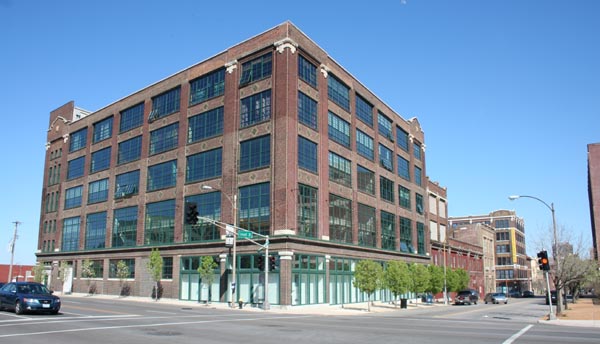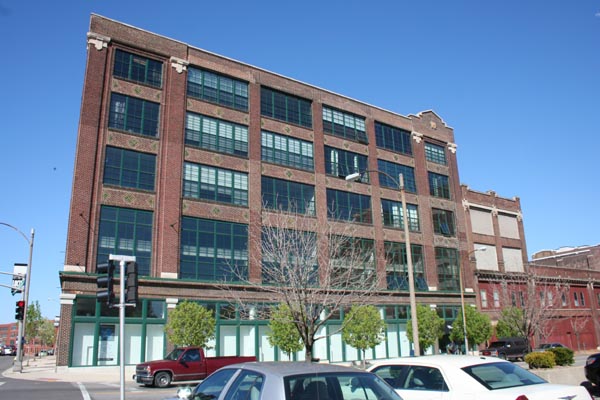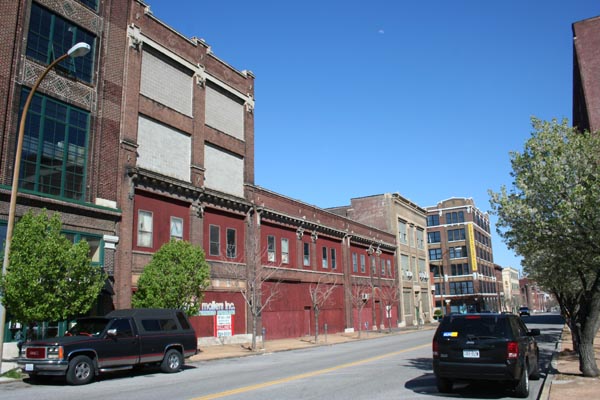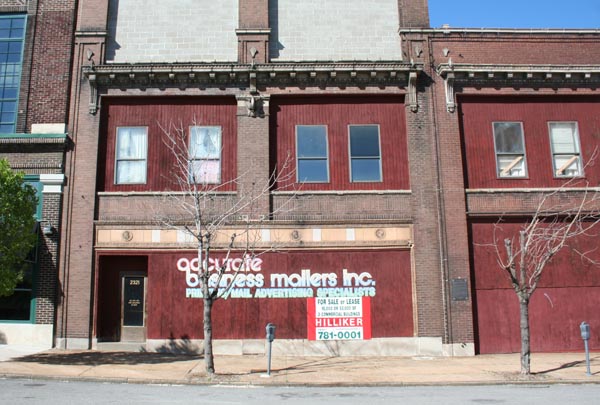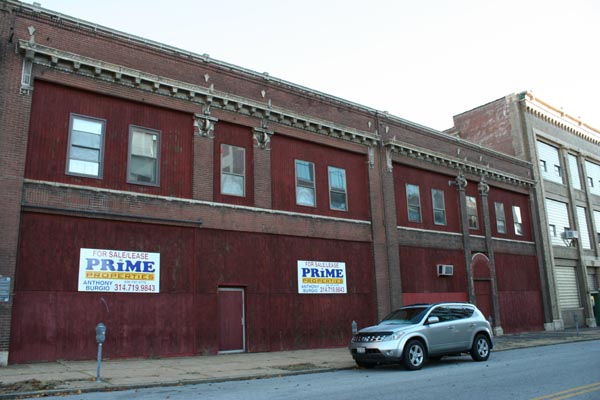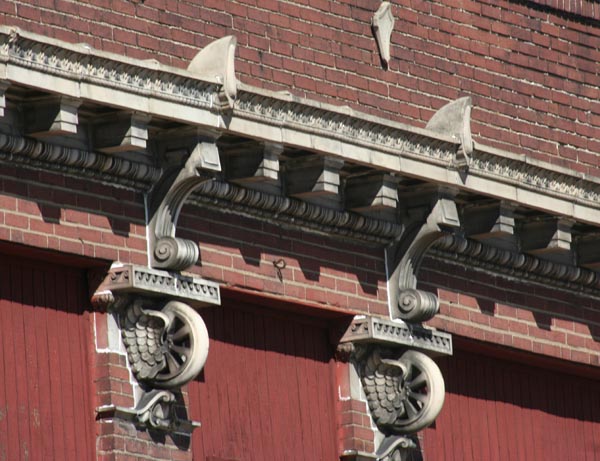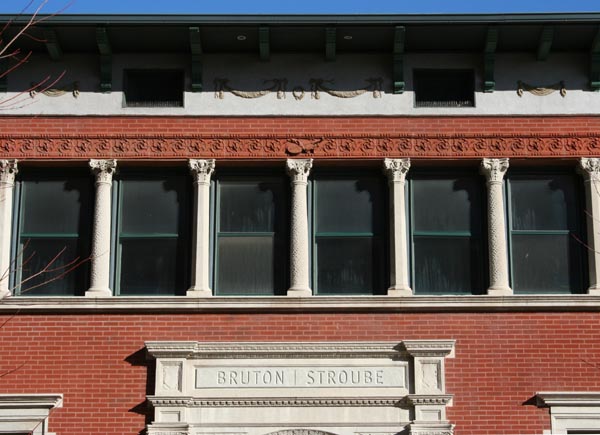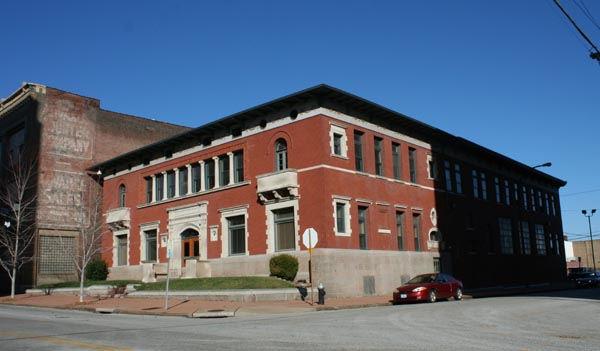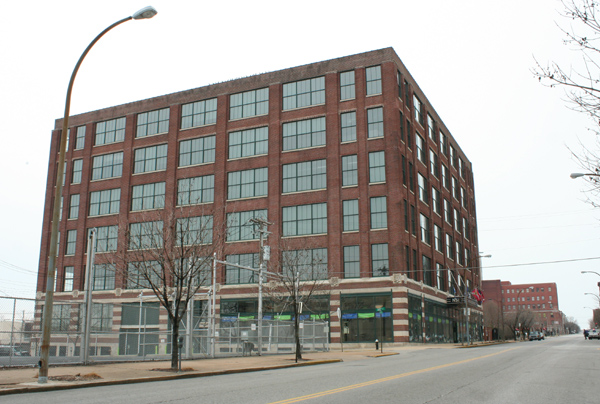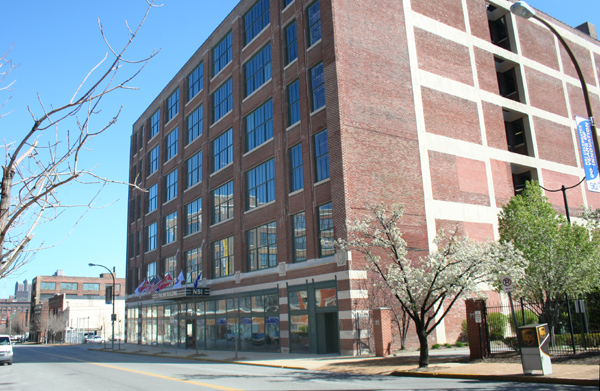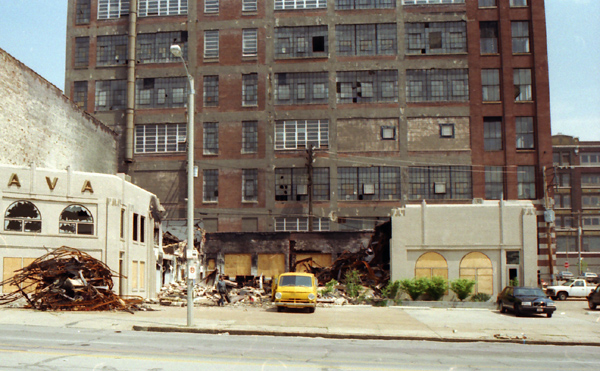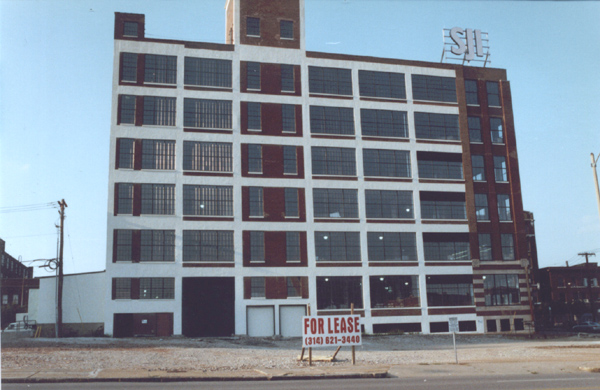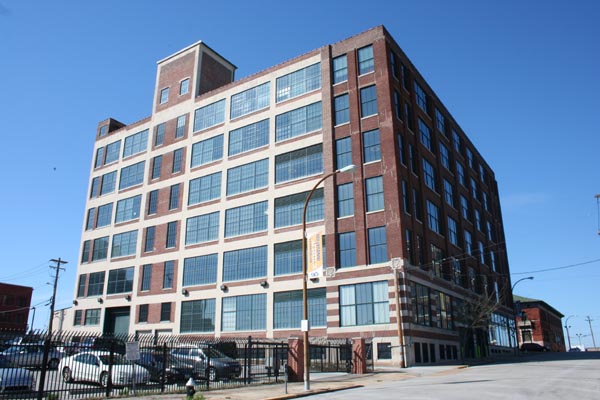Built St. Louis > > Central Corridor > > Downtown West > > Locust Street
|
Locust Street east of Jefferson has more buildings than parking lots, at least until 21st Street. It's a rarity for this part of town. Haas Building
The large brown brick building at 410 N. Jefferson / 2323-27 Locust Street was originally the Haas Building, a name which remains over its western entrance. Among its most prominent tenants was the Bertha Hat Company, founded by the building's original owner. The Haas Building was a center for hat manufacturing into the 1970s; it also housed auto showrooms in the heyday of the "Automobile Row" along Locust. The building was renovated in the late 2000s as the Westgate Lofts. Relatively thin piers and large expanses of glass mark this as a fairly pure Chicago School building. Small Classical details accentuate the piers and main entryway. Jacob Hirshstein also designed the similarly scaled, clad and named Elias Haas Building, two blocks east. |
|
|
Mendenhall Building
A more obvious relic of Automobile Row is the group of three conjoined buildings next door. Though they are three separate structures, the group sports unified decorative details in the form of the winged automobile wheels common in the 1920s and 1930s. The lower portion was occupied early on by the Mendenhall Motor Company, which built the tall addition in 1924. Mendenhall sold Model Ts from this building for many years; the last Ford was sold here in 1950. The most recent occupant is Accurate Business Mailers, Inc.; the remainder of the building appears unoccupied as of 2010. |
|
|
Beethoven Conservatory
This lovely building, built as the Beethoven Conservatory, combines the horizontal lines and grouped windows common to the Prairie Style with more traditional details. It is one of only two surviving buildings from Lucas Place, one of the city's original private streets and once its most prestigious address. The Conservatory predates most of its surroundings by several decades, and its refined elegance, significant setback and more conservative scale make it stand out from the brawny commercial and industrial architecture around it. The music school moved out in 1904 as the neighborhood (no longer restricted by protective covenants) was turning commercial; the Otis Elevator Company moved in in 1913, and greatly expanded the building with two additions to the north. In the 1980s it was home to Cordes Printing Company; as of 2009 it is home to Bruton Stroube, an advertising / media agency with its own film and photography studios. |
|
|
Willys Building
The Willys-Overland Building is another Chicago School industrial building, with a brawny structure, minimal ornament, and more glass than solids on its facade. A brick finished design wraps the street-facing sides of the building, but it shows its true colors on the south and west facades, where the concrete structure is exposed without adornment. Like many buildings on this stretch of Locust, it was built by an automotive company - the Willys-Overland Company. Two styles of auto were sold and serviced here, until the Great Depression forced the Willys-Overland Company to relocate. |
|
|
While photographing the remains of an Olive Street building destroyed by fire, I also inadvertently captured part of the Willys-Overland Building before its 1999 renovation. The grungy backside doesn't appear to have been touched in many decades, and is marked by sporadic infill and ad-hoc alterations. SJI Companies purchased the building in 1999 after a long vacancy. SJI got it nomintated to the National Register of Historic Places, and renovated it for office space as the SJI Building. The award-winning 1999 renovation completely transformed the building, cleaning the concrete structure and replacing the deteriorating glazing with a fresh and unified set of new windows. In 2005 it was sold to advertising and marketing firm NSI Ventures, LLC, and renovated once again; it is currently known as the NSI Building. |
|
